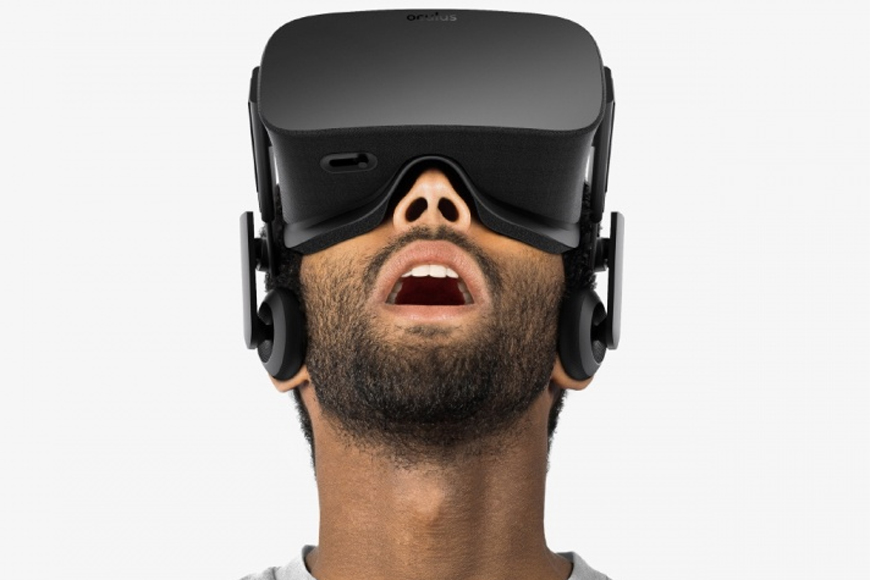With ‘the year of VR’ finally upon us, Craig Robinson wonders if this technology will be used in UK eSports and how it can affect the competitive side of gaming.
The long awaited development of the Oculus Rift and HTC Vive VR headsets is finally paying off.
The Oculus Rift launches next month with a $599 price tag, and the Vive is following in April priced at $799. With that in mind, I asked a number of people involved within the UK scene and eSports for their thoughts on the possibility of VR being introduced in their field of work.
Could pro players use VR headsets to play matches live? Could spectators join in and virtually walk around the map as it’s being played out in real-time?
The first thing that comes to mind for VR within eSports was to look at it from an organisation’s perspective. The most immediate way to gain interest in a VR eSport is if the organisations show interest in competing in that format or game, or a competitive VR-designed game takes off.
Fnatic tell us that there are some clear strength and weaknesses at this current stage of the VR technology.
“The VR suits and full size guns bring in a new element of skill into the game by incorporating full body movements as input commands,” says Brian Kerr, head of Fnatic Gear. “If the games support, say, running really fast versus walking or trick shots using a life size gun controller, the game gets a new element of skill added, while making the game more physical, and making the actions of the person far more interesting to watch as a spectator.
“However, if the VR technology is too expensive so that many can’t afford it, it instantly shrinks its potential of becoming a top eSports/spectator sport. The top games are all free-to-play with virtually no barrier to entry. It is why they have become leading eSports titles.
“Our philosophy at Fnatic Gear is to make premium product affordable for all, so people don’t need to spend tons of money to have what the best in the world plays with. In VR however, if a player wanted to compete they would first need to purchase $600 to $1,000 worth of VR gear before they could even get started.”
“If the VR technology is too expensive so that many can’t afford it, it instantly shrinks its potential of becoming a top eSports/spectator sport.”
Fnatic
The next big thing to look into is how people and professionals within the scene perceive VR. Both of those we spoke to below remain unconvinced for now.
ESL UK caster Joe “Munchables” Fenny says: “I think there will be some vague attempts at ‘VR eSports’, but I don’t really expect it to gain much traction or be particularly incredible for a good couple of years. Once there are major developers involved in creating titles specifically for VR eSports, then we’ll see growth.”
Elliot Brown from UK org Ufrag comments: “VR headsets being used for games like CoD and CSGO would still be a long way away from people wanting to actually use them in the competitive scene. I think for sure a dedicated VR tournament or leagues would be something to expect as I could see it being very marketable and enjoyable.”
Perhaps more VR games will be designed for competitive play in the future. At the same expo where Rift was announced, there were competitive games being played with the headset being used as a tool in the game. The game ‘Omni’ was demoed using treadmills and a helmet to allow players to have a first person shooter experience (see more here).
As for VR and spectator applications, after watching the E3 2015 demonstration of the Microsoft Hololens on the Minecraft stage, it’s intriguing to see how VR may be used as a spectator’s tool in the future.
What does Munchables think of this?
“It would probably be glorious,” he laughs, “and possibly a little overwhelming to start with. While I imagine it would be great, it’s hard to say without trying it our, but more vision and clarity can only be a good thing, right?”
Meanwhile, The Dailydot already published an article looking at whether VR could be used for games like League of Legends.
On the other hand, id Software co- founder has outlined his ambitions for a VR eSports arena.
There are other ideas – an opinion piece here shows how amazing VR spectatorship could be. In that article, it explores how spectators could experience the LoL Worlds Quarter Finals in Wembley Arena back in their own homes, live through the internet using a VR headset (which accesses VR cameras from the event).
Facebook said back when it acquired Oculus that it plans to use the VR tech not only for gaming but for live events. Imagine sitting in your room and virtually experiencing the Worlds finals as if you’re there, even though they’re actually taking place on the other side of the world.
Overall, VR in eSports seems like a long way away. 2016 may be the year for hype and hands-on experience with VR equipment, but the application of it in spectating and competing does seem a long way off due to its practicality problems and relatively early stage of development.
However, there is clearly a demand and interest for this technology – we will have to wait and see if and when it makes an impact on eSports.


